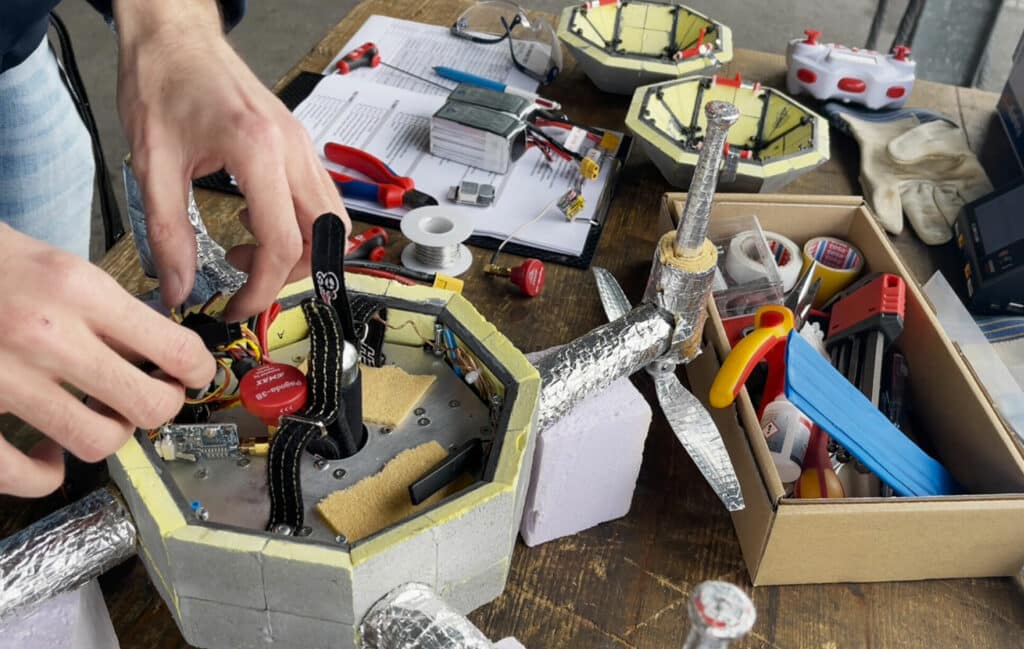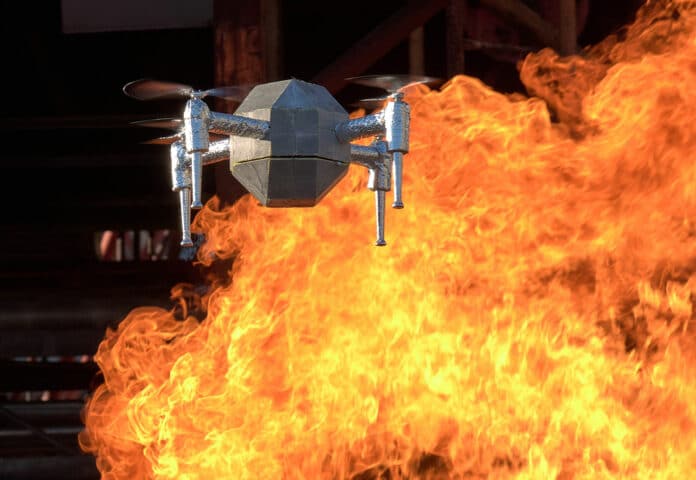Firefighters put themselves in dangerous situations when saving people in danger. Before they go directly into the danger zone, the firefighters naturally don’t know what exactly awaits them and what difficulties they will encounter.
Drones equipped with cameras and sensors could help reduce risks to human lives by providing important information about the distribution of fire sources, unexpected hazards, or trapped people. However, the application of drones is often limited by environmental factors such as extreme temperatures encountered in fire disasters.
To address this problem, researchers from Imperial College London and Switzerland’s Empa research institute are developing a heat-resistant drone that can withstand high enough temperatures to enter burning buildings.
Named the FireDrone, the experimental quadcopter could be sent into a burning building or forest fire and provide crucial first-hand data from danger zones – noting trapped people, building layouts, and unexpected hazards. The data could allow firefighters to prepare accordingly to keep themselves safe and potentially save more lives.
The FireDrone is made of a new protective structural shell made of lightweight, thermally super-insulating materials like polyimide plastic, silica, and glass fibers – the latter provide structural reinforcement. Also, aluminum cladding additionally helps reflect heat away from the drone.

Within the protective exoskeleton, researchers placed temperature-sensitive components, such as regular and infrared cameras, CO2 sensors, video transmitters, flight controllers, batteries, and radio receivers. They also used the release and evaporation of gas from the CO2 sensors to build a cooling system to keep temperatures down.
The aerogel insulation jacket and an additional built-in cooling system help the drone withstand temperatures of up to 200°C for as much as 10 minutes at a time.
The prototype of the FireDrone has already been successfully tested in temperature-controlled chambers and flown close to flames at a firefighter training center, with more trials planned for the future.
In future work, the research team plans to miniaturize and add more sensors to the heat-resistant drone, which might lead to its deployment in real-life firefighting missions and help save lives. Once commercialized, the FireDrone could be used to scope out fires for people and extra hazards to bolster firefighting. It could conceivably also be used to assess forest fires or in extremely cold environments, like polar regions and glaciers, thanks to its insulating aerogel.
“The use of drones is often limited by environmental factors such as extreme temperatures,” said Mirko Kovac, head of Empa’s Sustainability Robotics Laboratory and the Aerial Robotics Lab at Imperial College London. “With the FireDrone, we are showing a way to significantly expand the future range of applications for drones in extreme environments.”
Journal reference:
- David Häusermann, Sam Bodry, Fabian Wiesemüller, Aslan Miriyev, Severin Siegrist, Fan Fu, Sabyasachi Gaan, Matthias M. Koebel, Wim J. Malfait, Shanyu Zhao, Mirko Kovač. FireDrone: Multi‐Environment Thermally Agnostic Aerial Robot. Advanced Intelligent Systems, 2023; DOI: 10.1002/aisy.202300101
